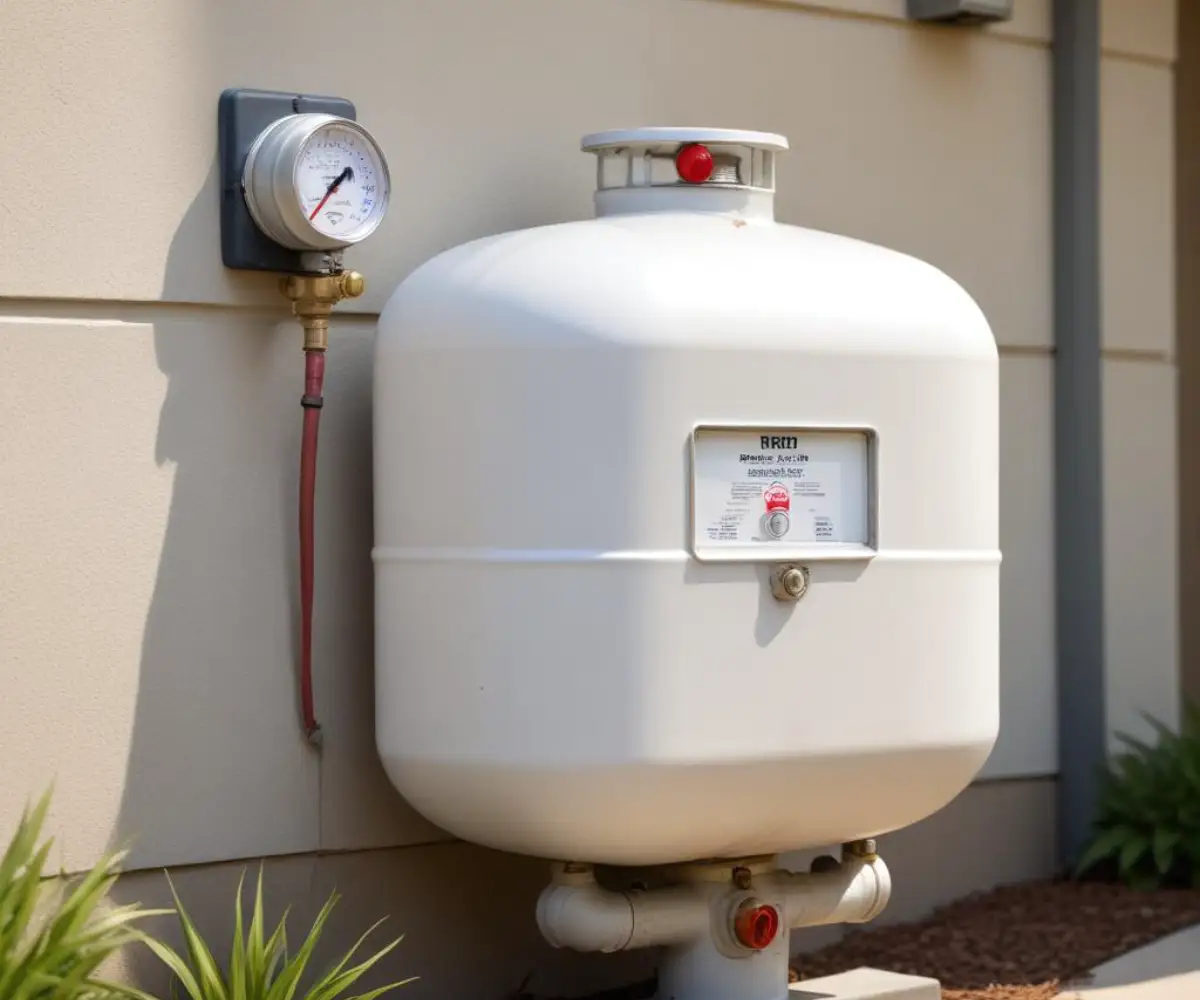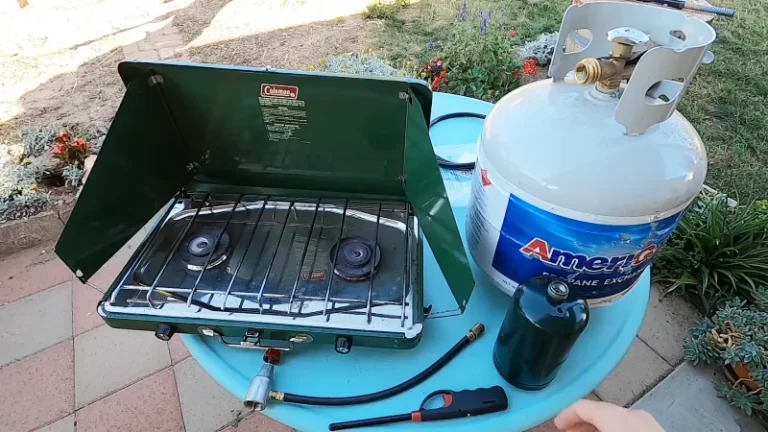Can You Fill Propane Tanks With Natural Gas? The Explosive Truth
In the quest for convenience and cost savings, a common question arises: can you fill a standard propane tank with natural gas from a home supply line? It seems like a clever shortcut, tapping into a seemingly endless and cheaper fuel source for your grill or patio heater.
However, the answer to this question is a definitive, resounding, and absolute NO. Attempting to fill a propane tank with natural gas is not just impractical; it is an extremely dangerous act that can lead to catastrophic failure, fire, and explosion.
You'll Learn About
The Unwavering Answer: A Critical Safety Warning
Let’s be perfectly clear: under no circumstances should you ever attempt to put natural gas into a tank designed for propane. The two fuels have fundamentally different chemical and physical properties that make them incompatible for storage in the same type of container.
This article will explain the science behind why this is impossible and highlight the severe risks involved. Understanding these core differences is essential for ensuring the safety of your home and family.
The Science of Extreme Pressure: Why a Propane Tank Would Fail
The primary reason this is a deadly idea comes down to one word: pressure. The way these two gases are stored is fundamentally different, and the tanks are engineered specifically for those differences.
A standard propane tank, like the one for your barbecue, is designed to hold propane in a liquid state. This is achieved at a relatively low pressure, typically ranging from 100 to 200 PSI (pounds per square inch). The tank’s steel walls are built to safely contain this pressure.
Natural gas, which is mostly methane, cannot be turned into a liquid at room temperature simply by pressurizing it. To store a useful amount of natural gas in a tank, it must be stored as a highly compressed gas, known as Compressed Natural Gas (CNG). CNG tanks are subjected to immense pressures, often between 3,000 to 3,600 PSI. This is up to 20 times the pressure a propane tank is designed to handle.
Understanding Propane (LPG) Storage
Propane is also known as Liquefied Petroleum Gas (LPG) because it’s stored as a liquid. This liquid state allows a large amount of energy to be stored in a relatively small, portable container. As you use the gas, the liquid boils and turns back into a vapor, which flows to your appliance.
The tank is specifically engineered for these moderate pressures and the chemical properties of liquid propane. Every component, from the valve to the welds, is rated for this specific purpose.
The Crushing Force of Natural Gas (CNG) Storage
A natural gas vehicle or a CNG storage cylinder is a feat of engineering, built with incredibly thick, high-strength materials to withstand the enormous internal pressure. Putting that same pressure into a thin-walled propane tank would cause it to rupture violently.
The result would not be a simple leak; it would be a catastrophic failure of the container, instantly releasing a large cloud of flammable gas. If this occurs near any ignition source—a pilot light, a spark from a motor, or even static electricity—the result is a devastating explosion.

Propane vs. Natural Gas: A Tale of Two Hydrocarbons
To fully grasp the incompatibility, a direct comparison of their properties is essential. While both are flammable hydrocarbon fuels, their differences in storage, density, and energy content are critical.
This table highlights the fundamental differences that make these fuels and their storage containers entirely non-interchangeable.
| Property | Propane (LPG) | Natural Gas (primarily Methane) |
|---|---|---|
| Storage State | Liquid | Compressed Gas (CNG) |
| Storage Pressure | ~100 – 200 PSI | ~3,000 – 3,600 PSI |
| Energy Density | High (~2,500 BTU per cubic foot) | Low (~1,000 BTU per cubic foot) |
| Density vs. Air | Heavier than air (pools in low areas) | Lighter than air (dissipates upwards) |
| Portability | Highly portable in liquid form | Not easily portable without specialized high-pressure tanks |
Dangers Beyond Pressure: Chemical and Equipment Incompatibility
Even if you could magically pressurize natural gas into a propane tank without it exploding, it would still be incredibly dangerous and unusable for your appliances. The problems extend to the very equipment designed to burn the fuel.
Different Energy Content
Propane contains more than double the energy (BTUs) per unit of volume compared to natural gas. Appliances are precisely engineered to handle a specific amount of fuel to produce a safe and efficient flame. Feeding lower-energy natural gas through a system designed for high-energy propane would result in a very weak, ineffective, or non-existent flame.
The Orifice Problem
Every gas appliance has a small, precisely drilled hole called an orifice that releases the gas into the burner. Because propane is more energy-dense, it uses a much smaller orifice. Natural gas requires a larger orifice to allow more fuel to flow to achieve the same heat output.
Using natural gas with a tiny propane orifice will starve the appliance of fuel. Conversely, using propane on a natural gas orifice will release a dangerously large amount of fuel, creating a massive, uncontrollable flame—essentially a blowtorch—and producing deadly carbon monoxide.
What About My Home’s Natural Gas Line?
A common misconception is that one could simply connect a hose from their home’s natural gas stub to a propane tank to fill it. This is flawed for a simple reason: the pressure in your home’s gas line is incredibly low, typically around 0.25 PSI.
This pressure is only enough to push the gas through your home’s pipes to your furnace or stove. It is nowhere near powerful enough to overcome the existing pressure inside a propane tank and force more gas in.
The Right Way to Switch: Appliance Conversion, Not Tank Refilling
While you can absolutely never fill a propane tank with natural gas, you can often convert an appliance from one fuel type to the other. This is the correct, safe, and sanctioned procedure for switching fuel sources.
For example, a common and practical project is to convert patio heater to natural gas, which involves using a manufacturer-approved kit. These kits contain the correct orifices and regulators needed to safely operate the appliance with the different pressure and energy content of natural gas.
Legal, Insurance, and Financial Consequences
Beyond the immediate physical dangers, attempting such a modification has serious legal and financial ramifications. Tampering with gas fittings and fuel containers is often illegal and violates local building and fire codes.
Furthermore, if an accident, fire, or explosion were to occur as a result of this unauthorized and dangerous activity, your homeowner’s insurance policy would almost certainly be voided. You would be held personally and financially liable for all damages, injuries, or deaths that result.
The principle of using the right tool for the right job is paramount in home maintenance. Just as it’s critical to understand why is drano bad for pipes when dealing with plumbing, understanding the fundamental differences between fuel gases is a matter of life and death.
Final Verdict: A Dangerous Gamble With No Reward
The idea of filling a propane tank with natural gas is a non-starter. It is a dangerous misunderstanding of basic physics and chemistry that could have lethal consequences. There is no shortcut, no special adapter, and no clever trick that can make it safe.
Remember the key takeaways: the pressure difference is too extreme, the tanks are not interchangeable, and the appliances are not compatible without proper conversion. Always use the correct fuel for your equipment and consult a licensed professional for any work involving gas lines or appliance conversions. Your safety is not worth the risk.
Frequently Asked Questions
Can I fill a propane tank with natural gas?
No, you cannot fill a propane tank with natural gas. Propane is stored as a liquid under pressure, while natural gas is typically delivered to homes as a gas at very low pressure. Attempting to fill a propane tank from a residential natural gas line would result in a negligible amount of fuel being stored.
Is it dangerous to put natural gas in a propane tank?
Yes, it is extremely dangerous. To store a useful amount of natural gas, it must be highly compressed (CNG) or cryogenically liquefied (LNG). A standard propane tank is not designed to handle the very high pressures of CNG or the extremely cold temperatures of LNG, creating a risk of rupture or explosion.
Why Some Tiles Shockingly Don’t Feel Cold
Why are propane and natural gas stored differently?
Propane becomes a liquid at a relatively low pressure (around 177 psi at 100°F), making it easy to store in portable steel tanks. Natural gas (methane) only liquefies at extremely low temperatures (-260°F) or under immense pressure, far greater than a propane tank can safely withstand.
Can I use natural gas in my propane grill or appliance?
No, not without modification. Propane and natural gas operate at different pressures and have different energy densities; propane contains about 2.5 times more energy per unit of volume. Using natural gas in a propane appliance would result in poor performance, and using propane in an unmodified natural gas appliance could produce dangerous flames or explosions.
Can a propane tank be converted to hold natural gas?
No, a propane tank cannot be safely converted to store compressed natural gas (CNG). CNG is stored at pressures of 200-230 kg/cm², while propane tanks are designed for a maximum working pressure of around 19 kg/cm². The significant pressure difference makes such a conversion impossible and hazardous.

